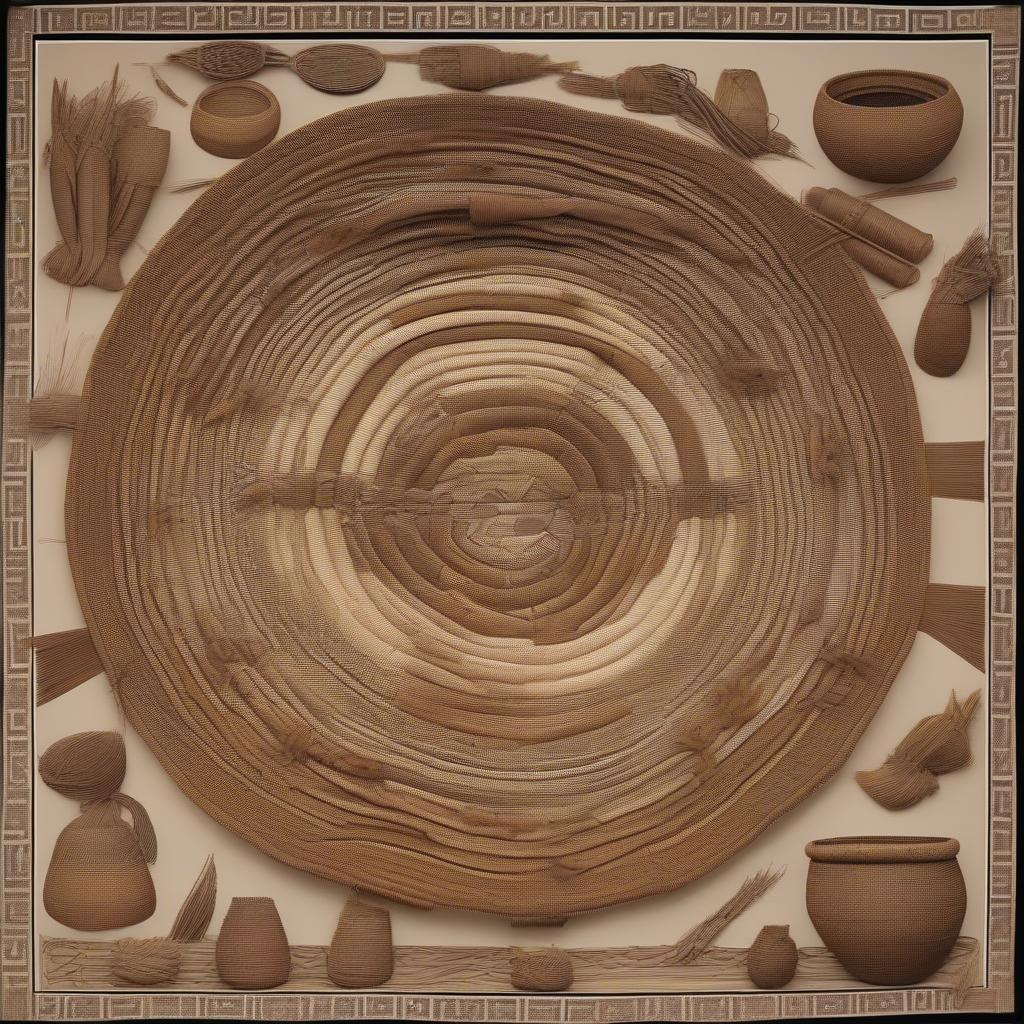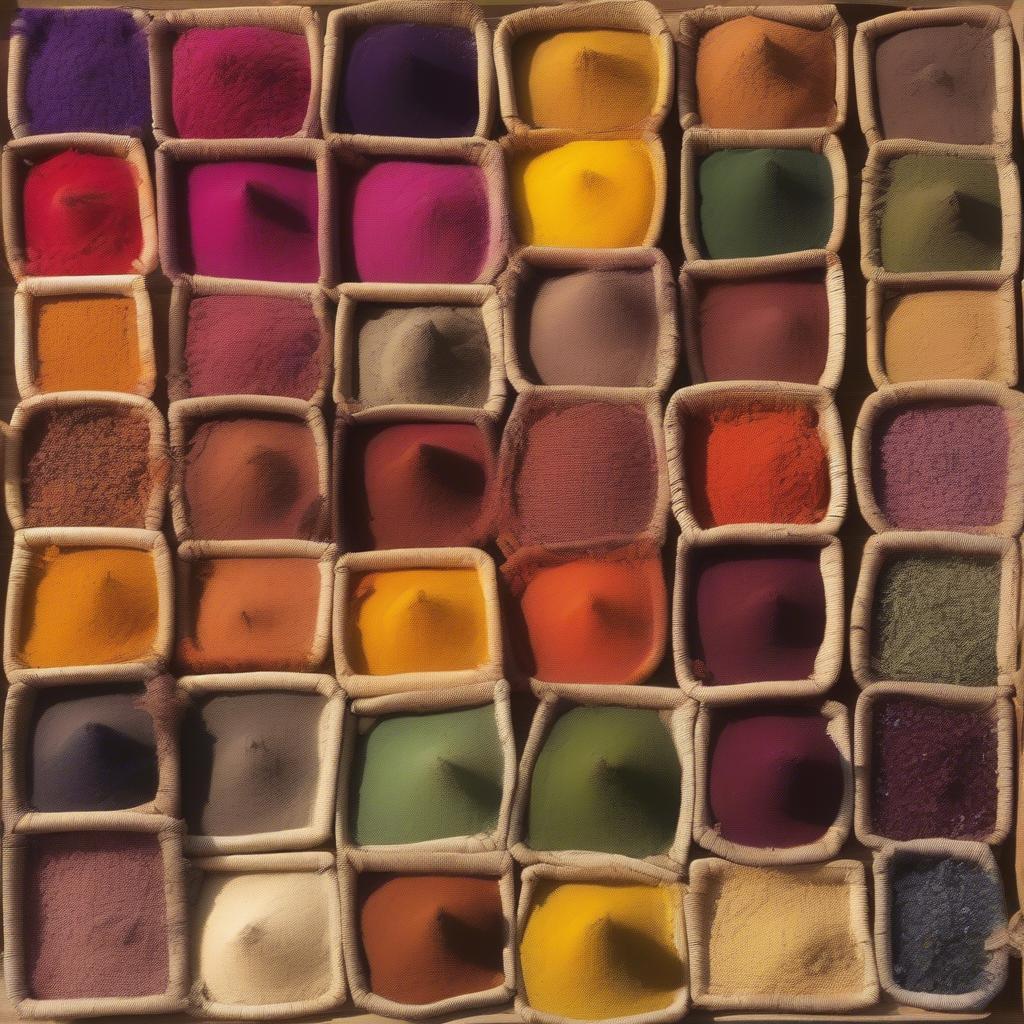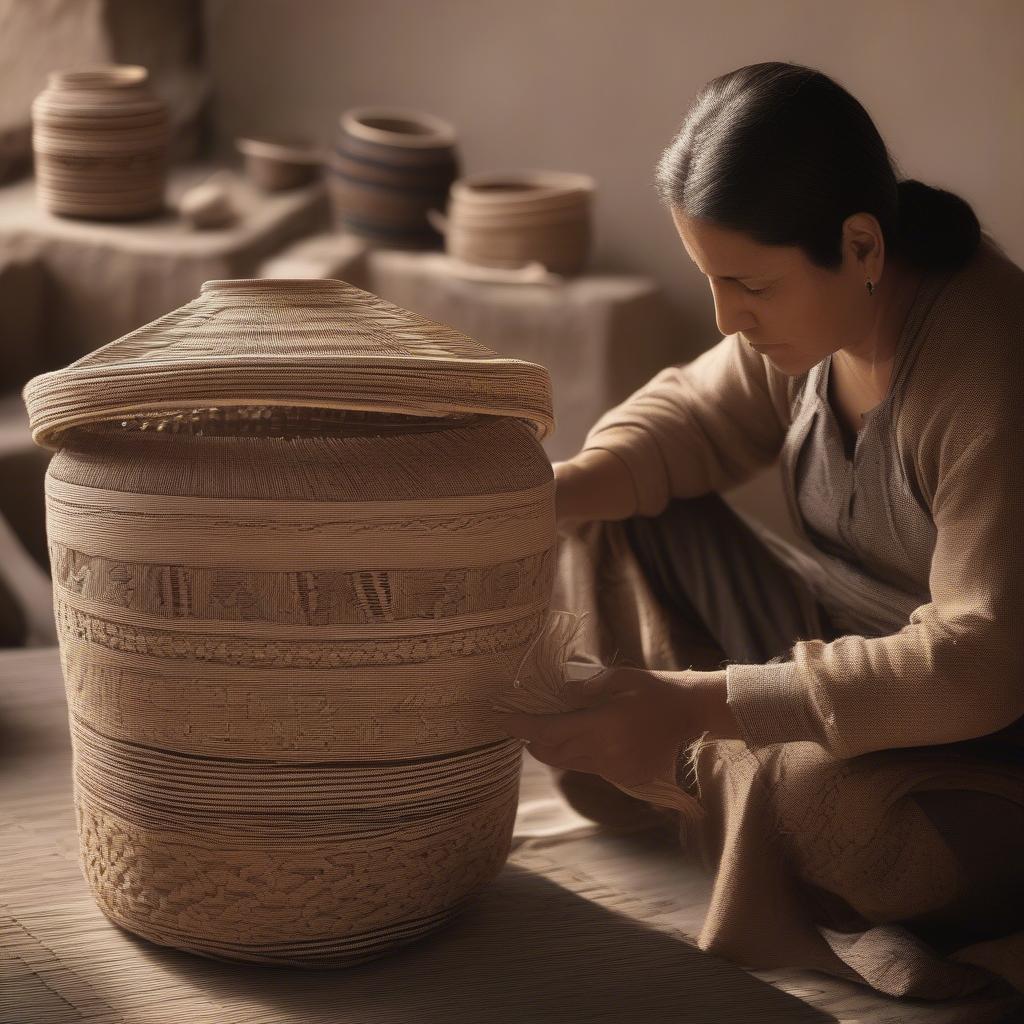Basket Weaving
Facts About Aztec Basket Weaving in Mexico
Aztec basket weaving in Mexico holds a rich history and cultural significance, demonstrating remarkable craftsmanship and artistry. These baskets were more than just functional objects; they played integral roles in Aztec society, from everyday life to religious ceremonies. Let’s delve into the fascinating world of Aztec basket weaving.
The Significance of Aztec Basket Weaving
Aztec basket weaving wasn’t simply a craft; it was an art form deeply intertwined with their daily lives and beliefs. Baskets were used for everything from carrying goods and storing food to ceremonial offerings and trade. The techniques passed down through generations reflected a deep respect for nature and the resources it provided. Different materials and weaving patterns often held symbolic meanings, connecting the weavers to their history and spirituality.
 Ancient Aztec Basket Weaving Techniques in Mexico
Ancient Aztec Basket Weaving Techniques in Mexico
Materials Used in Aztec Basket Weaving
The Aztecs utilized a variety of readily available natural materials for their basketry. Reeds, grasses, and plant fibers were commonly employed, each offering unique properties for different basket types. For example, strong reeds were preferred for large storage baskets, while flexible grasses were ideal for creating intricate designs. The careful selection and preparation of these materials was a crucial part of the weaving process, ensuring the durability and beauty of the finished product.
The Role of Natural Dyes
The vibrant colors of Aztec baskets were achieved through the use of natural dyes derived from plants, minerals, and even insects. These dyes not only added aesthetic appeal but also imbued the baskets with symbolic meaning. Certain colors were associated with specific deities or represented elements of nature, further enriching the cultural significance of these woven masterpieces.
 Natural Dyes and Pigments in Aztec Basketry
Natural Dyes and Pigments in Aztec Basketry
Aztec Basket Weaving Techniques
Aztec basket weaving employed a range of sophisticated techniques. Coiling, twining, and plaiting were among the most common, each producing distinctive patterns and textures. These techniques required both dexterity and artistic vision, resulting in baskets that were both functional and aesthetically pleasing. The complexity of the designs often reflected the weaver’s skill and experience.
Passing Down the Tradition
The knowledge of Aztec basket weaving was traditionally passed down through generations within families and communities. This ensured the preservation of ancient techniques and the continuation of cultural traditions. Young apprentices learned from experienced weavers, mastering the intricacies of material selection, preparation, and the various weaving methods.
 The Legacy of Aztec Basket Weaving in Modern Mexico
The Legacy of Aztec Basket Weaving in Modern Mexico
The Future of Aztec Basket Weaving
While modern materials and techniques are sometimes incorporated, many artisans remain dedicated to preserving the traditional methods of Aztec basket weaving. This commitment ensures the survival of a valuable cultural heritage, keeping alive the artistry and craftsmanship of their ancestors. These baskets continue to be cherished for their beauty, functionality, and the rich history they embody.
“Aztec basketry is more than just a craft; it’s a living testament to the ingenuity and artistry of the Aztec people,” says Dr. Elena Ramirez, an expert in pre-Columbian art. “Each basket tells a story, woven with the threads of tradition and the vibrant colors of their culture.”
Conclusion
Facts About Aztec Basket Weaving In Mexico reveal a rich tapestry of history, artistry, and cultural significance. From the materials used to the intricate weaving techniques, each aspect of this ancient craft reflects the ingenuity and cultural values of the Aztec people. As we admire these woven masterpieces, we are reminded of the importance of preserving traditional crafts and the stories they tell.
“The beauty of Aztec basket weaving lies not only in the finished product but also in the process itself,” adds Maria Sanchez, a renowned Mexican basket weaver. “It’s a meditative practice that connects us to our ancestors and the natural world.”
FAQ
-
What materials did the Aztecs use for basket weaving?
The Aztecs primarily used reeds, grasses, and plant fibers. -
What were Aztec baskets used for?
Aztec baskets served various purposes, from storing food and carrying goods to ceremonial offerings and trade. -
How did the Aztecs color their baskets?
They used natural dyes derived from plants, minerals, and insects. -
What are some common Aztec basket weaving techniques?
Coiling, twining, and plaiting were common techniques. -
Is Aztec basket weaving still practiced today?
Yes, many artisans in Mexico continue to practice and preserve traditional Aztec basket weaving techniques.
Do you have any other questions about the fascinating world of Aztec basket weaving? Explore our other articles on traditional crafts and the rich history of Mexican art.
Need assistance? Contact our 24/7 customer service team at Hotline: +84 388 951 999 or visit us in Hanoi, Vietnam, or Tech Avenue, Suite 12, San Francisco, CA 94105, USA.
